| Availability: | |
|---|---|
| Quantity: | |
1.Introduction:
NLL series aluminum alloy tension clamp(Bolt type) is suitable for aerial line up to 35kV,fixing aluminum wire or steel core minium wire on the strain pole,aerial insulation aluminum conductor and insulation aluminum cover are being used tofether,and the action is insulation protection.Its core function is to securely anchor and support electrical conductors at termination points (dead-ends) or on steep angle changes, where the full mechanical tension of the line must be transferred to the support structure (pole or tower).
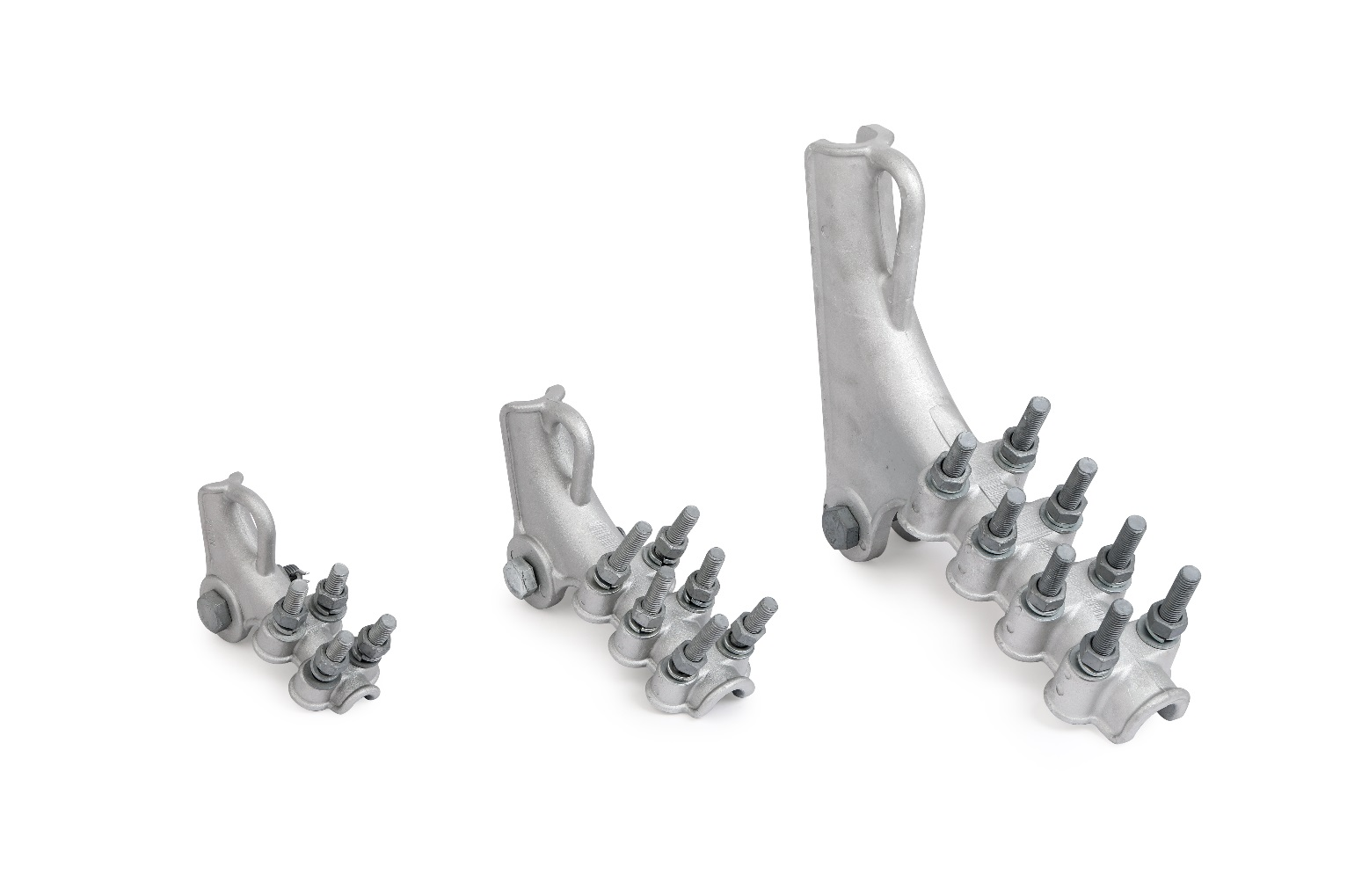
2.Specifications:
TYPE | Conductor dia (mm) | U bolts | Breaking load | |
Dia | Qty | |||
NLL-1 | 8.0-12.0 | 12 | 2 | 40 |
NLL-2 | 12.0-16.0 | 12 | 2 | 60 |
NLL-3 | 16.0-18.0 | 14 | 3 | 70 |
NLL-4 | 18.0-22.5 | 14 | 3 | 90 |
NLL-5 | 22.5-29.0 | 16 | 4 | 120 |
NLL-6 | 26.0-32.7 | 18 | 4 | 120 |
3. Key Design Features and Components:
Robust C-Shaped Body: The main body of this anchor clamp is a heavy-duty, forged aluminum or high-strength aluminum alloy casting. The C-shape provides the structural strength needed to handle high mechanical loads and allows for easy installation of the conductor.
Integral U-Bolt/Eyelet: A prominent, forged U-shaped loop (eyelet) is integrated at the top of the clamp. This is the suspension point designed to attach directly to an insulator string, tower hardware, or another support fitting, forming the critical link that carries the tension load.
Multi-Jaw Gripping Mechanism: The most distinctive feature is its segmented, wedge-shaped gripping jaws. Typically arranged in a graduated, overlapping pattern (six are visible in your image), these jaws work in unison. Each jaw is individually fitted with a:Bolt and Nut: These are used to tighten the entire assembly. As the nuts are torqued, the jaws are drawn together uniformly.
Material: The use of forged aluminum alloy makes the clamp both lightweight and exceptionally strong. It also provides excellent corrosion resistance, which is crucial for long-term outdoor exposure.
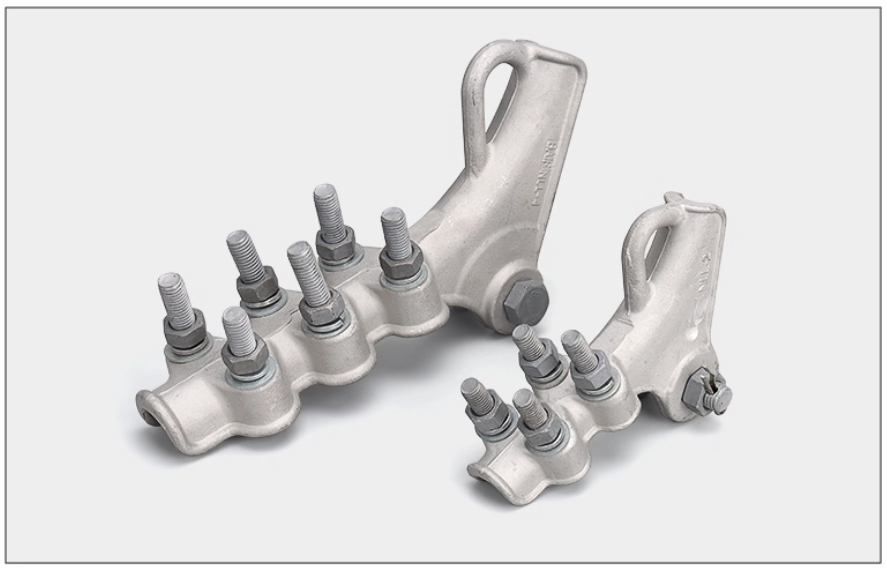
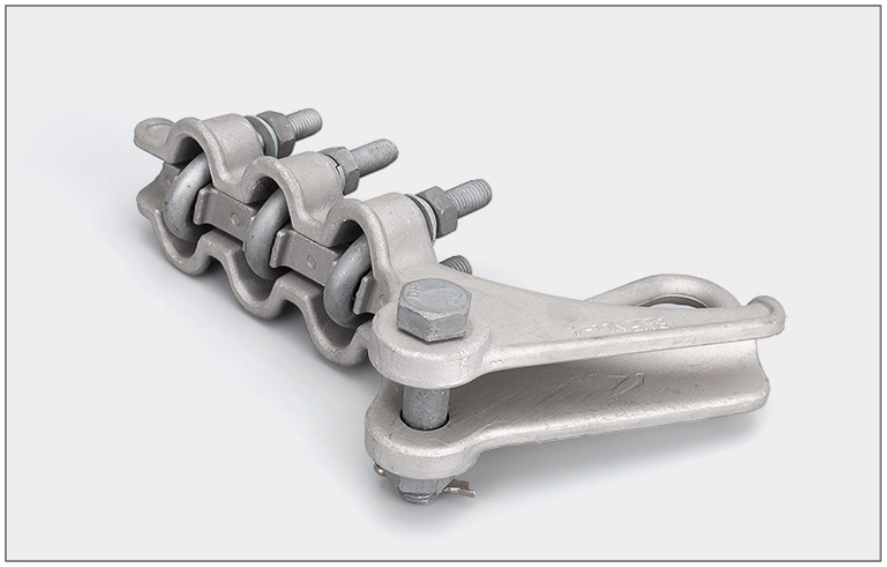
4. Working Principle:
This dead end clamp operates on a simple but highly effective mechanical principle:
The conductor is placed into the curved channel of the clamp's body, behind the set of jaws.
The bolts are tightened sequentially and to a specified torque using a calibrated wrench.
As the bolts are tightened, the multiple wedge-shaped jaws are pulled inward and forward.
These jaws bite uniformly into the surface of the conductor, creating an extremely high friction grip.
This grip mechanically locks the conductor in place, preventing any slippage even under extreme tension loads, vibration, and wind-induced movement.
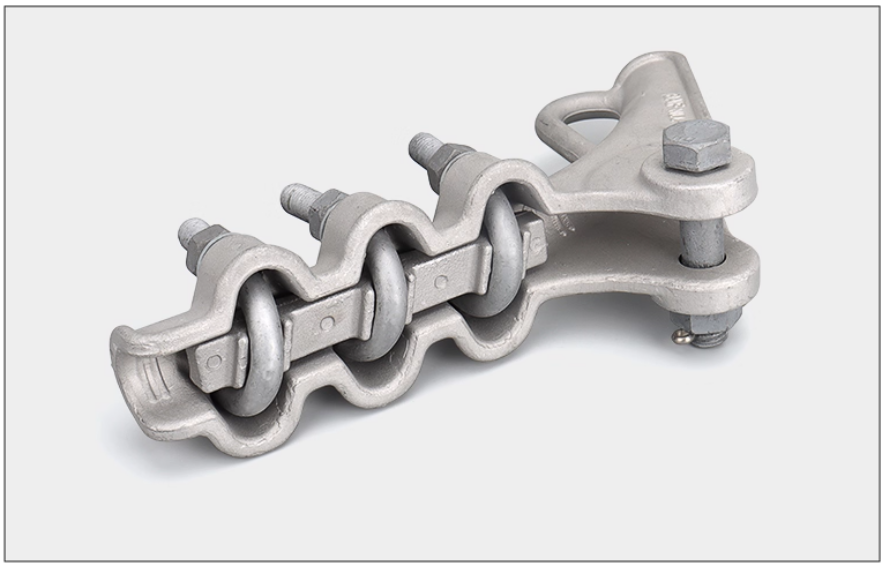
5. Primary Applications:
Dead-Ending: Terminating a run of conductor at a pole or tower.
Angle Changes: Anchoring the conductor at locations where the line changes direction significantly.
Tension Splices: Sometimes used to join two conductor ends under tension.
Substation Terminations: Connecting overhead lines to substation equipment.
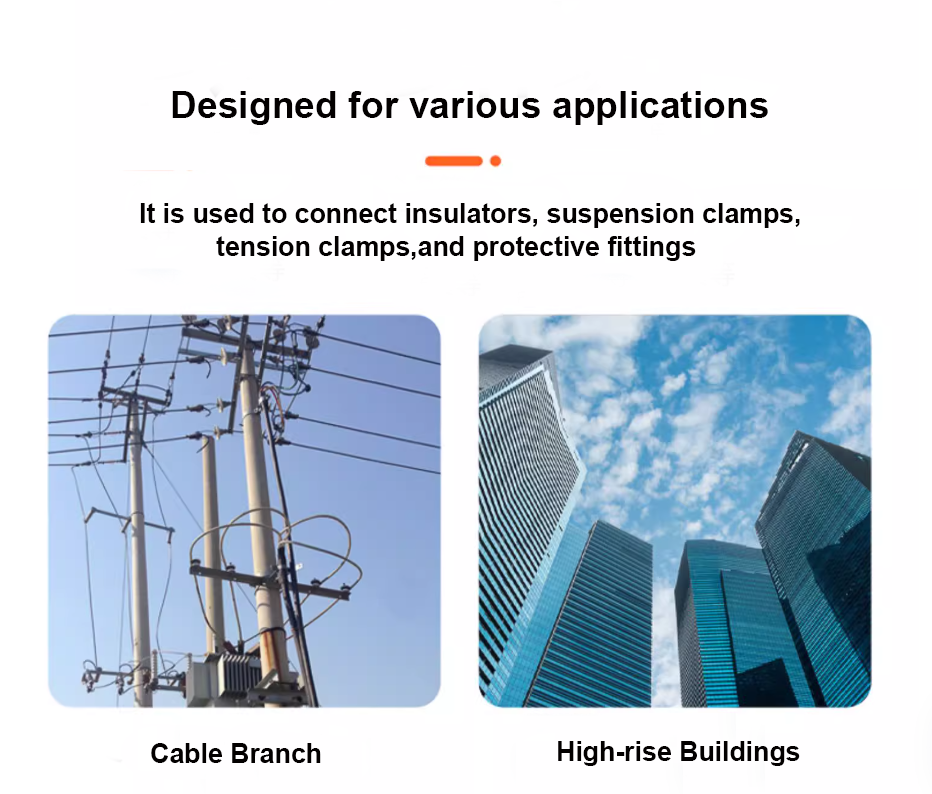
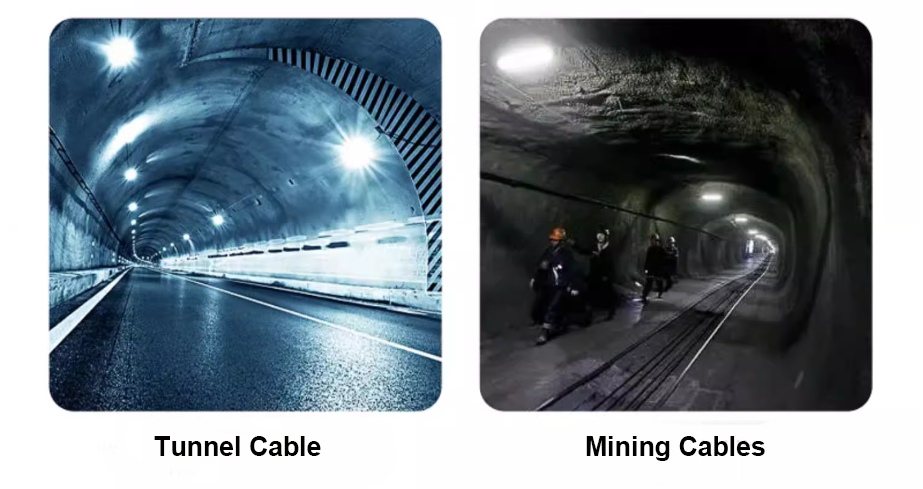
6. Advantages:
High Tensile Strength: Capable of handling the full rated breaking strength of the conductor.
Excellent Holding Power: The multi-jaw design distributes pressure evenly, minimizing damage to the conductor strands and preventing cold flow (deformation of the conductor).
Vibration Resistance: The secure grip dampens vibrations caused by wind (aeolian vibration), reducing the risk of conductor fatigue.
Durability: Forged aluminum construction offers a high strength-to-weight ratio and resists corrosion.
Reliability: A proven, mechanical design that is widely trusted in the utility industry.
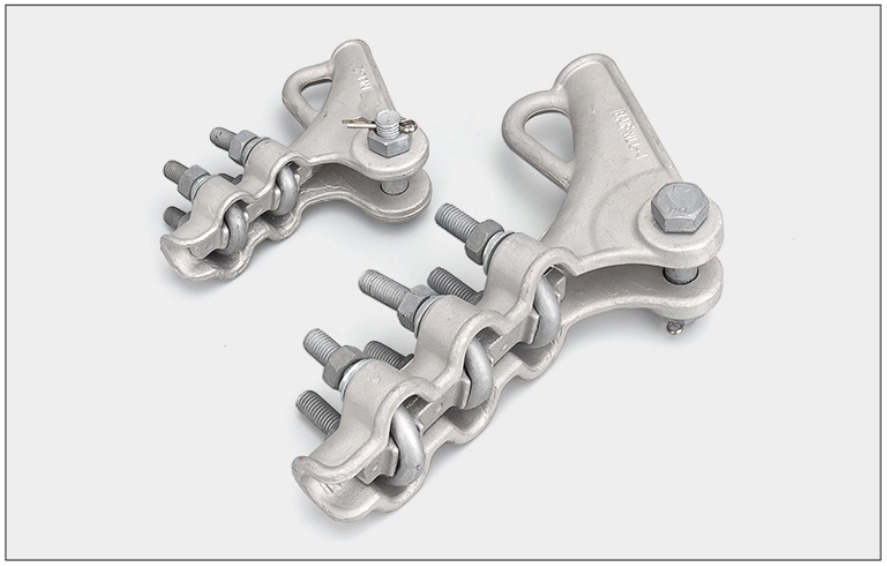
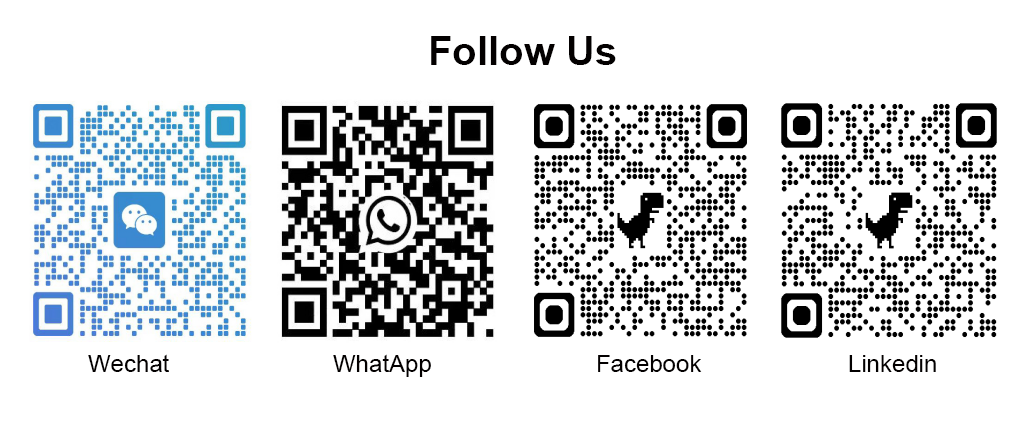
1.Introduction:
NLL series aluminum alloy tension clamp(Bolt type) is suitable for aerial line up to 35kV,fixing aluminum wire or steel core minium wire on the strain pole,aerial insulation aluminum conductor and insulation aluminum cover are being used tofether,and the action is insulation protection.Its core function is to securely anchor and support electrical conductors at termination points (dead-ends) or on steep angle changes, where the full mechanical tension of the line must be transferred to the support structure (pole or tower).

2.Specifications:
TYPE | Conductor dia (mm) | U bolts | Breaking load | |
Dia | Qty | |||
NLL-1 | 8.0-12.0 | 12 | 2 | 40 |
NLL-2 | 12.0-16.0 | 12 | 2 | 60 |
NLL-3 | 16.0-18.0 | 14 | 3 | 70 |
NLL-4 | 18.0-22.5 | 14 | 3 | 90 |
NLL-5 | 22.5-29.0 | 16 | 4 | 120 |
NLL-6 | 26.0-32.7 | 18 | 4 | 120 |
3. Key Design Features and Components:
Robust C-Shaped Body: The main body of this anchor clamp is a heavy-duty, forged aluminum or high-strength aluminum alloy casting. The C-shape provides the structural strength needed to handle high mechanical loads and allows for easy installation of the conductor.
Integral U-Bolt/Eyelet: A prominent, forged U-shaped loop (eyelet) is integrated at the top of the clamp. This is the suspension point designed to attach directly to an insulator string, tower hardware, or another support fitting, forming the critical link that carries the tension load.
Multi-Jaw Gripping Mechanism: The most distinctive feature is its segmented, wedge-shaped gripping jaws. Typically arranged in a graduated, overlapping pattern (six are visible in your image), these jaws work in unison. Each jaw is individually fitted with a:Bolt and Nut: These are used to tighten the entire assembly. As the nuts are torqued, the jaws are drawn together uniformly.
Material: The use of forged aluminum alloy makes the clamp both lightweight and exceptionally strong. It also provides excellent corrosion resistance, which is crucial for long-term outdoor exposure.


4. Working Principle:
This dead end clamp operates on a simple but highly effective mechanical principle:
The conductor is placed into the curved channel of the clamp's body, behind the set of jaws.
The bolts are tightened sequentially and to a specified torque using a calibrated wrench.
As the bolts are tightened, the multiple wedge-shaped jaws are pulled inward and forward.
These jaws bite uniformly into the surface of the conductor, creating an extremely high friction grip.
This grip mechanically locks the conductor in place, preventing any slippage even under extreme tension loads, vibration, and wind-induced movement.

5. Primary Applications:
Dead-Ending: Terminating a run of conductor at a pole or tower.
Angle Changes: Anchoring the conductor at locations where the line changes direction significantly.
Tension Splices: Sometimes used to join two conductor ends under tension.
Substation Terminations: Connecting overhead lines to substation equipment.


6. Advantages:
High Tensile Strength: Capable of handling the full rated breaking strength of the conductor.
Excellent Holding Power: The multi-jaw design distributes pressure evenly, minimizing damage to the conductor strands and preventing cold flow (deformation of the conductor).
Vibration Resistance: The secure grip dampens vibrations caused by wind (aeolian vibration), reducing the risk of conductor fatigue.
Durability: Forged aluminum construction offers a high strength-to-weight ratio and resists corrosion.
Reliability: A proven, mechanical design that is widely trusted in the utility industry.

